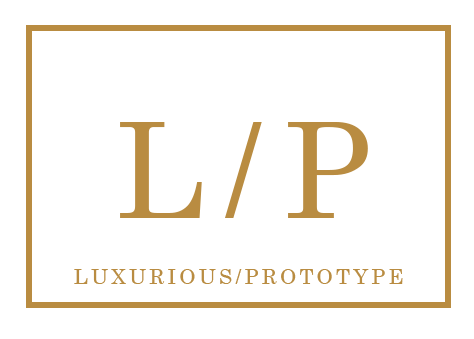“My art deals with light itself. It’s not the bearer of the revelation – it is the revelation.”
– James Turrell
As summer arrives and the sun moves to its apex in the northern sky, our attention turns to light. A new exhibition by L.A. artist James Turrell at the Guggenheim Museum brings our focus to this element with startling power: light not as a means but as an experience, a tangible artifact, a medium, a work in and of itself.
In his first solo exhibition in New York since 1980, Turrell has created a startling, site-specific installation: Aten Reign (2013). Billed as “one of the most dramatic transformations of the museum ever conceived,” Turrell has completely reimagined the iconic Guggenheim rotunda into a magnificent space of light, color, and contemplation. The concentric circles of the rotunda are covered with white fabric, creating five elliptical rings suspended from the ceiling that form an uplifting inner sanctum. Natural sunlight filters in from the museum’s central skylight, yet the space is transformative as hidden LED lights fill the museum with color, changing slowly yet dramatically from white, to yellow, to blue, pink, red and green.
Entering the space is at once disorientating and meditative. The ticket counter and audio-guide desk are hidden from view: instead we contemplate only the rotunda as a totally new space. The effect is something between a solemn Greek temple and a Kubrick-like spaceship: the smooth white fabric walls, the polished floor, the upward movement of the concentric circles are at once futuristic and ancient. The fountain is still visible and, significantly, audible, adding to the temple-like atmosphere of the room. Then the viewer is overwhelmed by the intense colors that literally fill the space.
Turrell thus allows us to focus purely on light. He reverses traditional conceptions of light in a gallery space: here, light is not a means to illuminate works of art – it IS the work of art. Light becomes an object: it is the focus of our experience. It profoundly affects the space, dissolving solid elements of architecture: the room seems to grow and contract depending on the color and intensity of the light. The artist thus draws us to its ephemeral nature and its transformative potential.
Turrell is fascinated by the interplay between natural and artificial light. The work’s zenith is the museum’s oculus, which brings our attention to the sun as a source of light: what Turell calls “bringing the sky into the space.” Indeed, the exhibition’s name, Aten Reign, is a reference to Aten, the disk of the sun in ancient Egyptian mythology. Yet as Turrell explains, sunlight is ‘old light’: the light from the sun has taken eight and a half minutes to reach us. This central column of ‘old light’ is transformed and surrounded by ‘new light’, the hidden LED’s that occupy the space. Turrell thus allows us to contemplate light in new ways: its origins, its movement, its travel, and its age. It is, in Turrell’s words, “light as we know it, not as we see it.”
As an installation, the work is experienced communally: it surrounds the viewer and engulfs her. While I was there, several patrons (myself included) lay on the gallery floor to contemplate the central sun disk and the colors that surrounded it. It was almost as if we had come together to an ancient temple in worship of Aten. Thus this luminous encounter allows us to contemplate light and its various qualities in a profoundly communal setting.
Furthermore, the work prompts us to truly experience light and color and its effect on the spirit. As I lay there, I found myself deeply affected by the changing colors. When the light turned bright white, I found my pulse begin to increase and my mind start to race. As it turned to blue I felt tranquil, almost sleepy. Pink inspired joy and red a vague arousal. The effect of experiencing the entire gamut is akin to watching a sunset, yet here the changing light surrounds you, devours you. Turrell feels that as humans we were “made for twilight”: here we can exist in this state perpetually, along with all the emotion and contemplation that it brings.
Complementing Aten Reign are four other works from earlier in Turrell’s career on view in the museum annexes. In Ronin (1968), a single vertical column of light creates a glowing fissure in the corner of the room. Light again transforms the entire space, dissolving the darkened western wall, which recedes, and bringing the eastern wall into sharp focus. In Afrum I (White) (1967), a solid white projection onto the corner of the room creates the illusion of a solid white cube: as the viewer interacts with the space, the cube appears to move and, upon close inspection, dissolves entirely into light. The Single Wall Projection Prado (White) (1967), by contrast is detractive: the white projection on the wall seems to excavate the space, creating the illusion of a portal into an unknown realm. Finally in Iltar (1976), a flat panel of color hanging on a wall is indirectly lit: the result is an elusive space without discernible limits or boundaries.
The Guggenheim exhibition is a stunning example of curatorial and artistic genius. The show is both monumental and intimate: Aten Reign is grandiose and encompassing, while the complimentary works in the annex are quiet, personal encounters. Both are profoundly experiential. The exhibition is simultaneously sacred and playful, inviting both user interaction and quiet contemplation. Turrell draws us profoundly to the many qualities of light: its ephemeral grace and transformative potential. Moreover, the artist induces from the viewer deeper questions about the nature of perception as our interpretations of reality are constantly shifted through the alchemical power of light.
James Turrell
June 21 to September 25, 2013
Solomon R. Guggenheim Museum
New York
– Oscar Lopez



